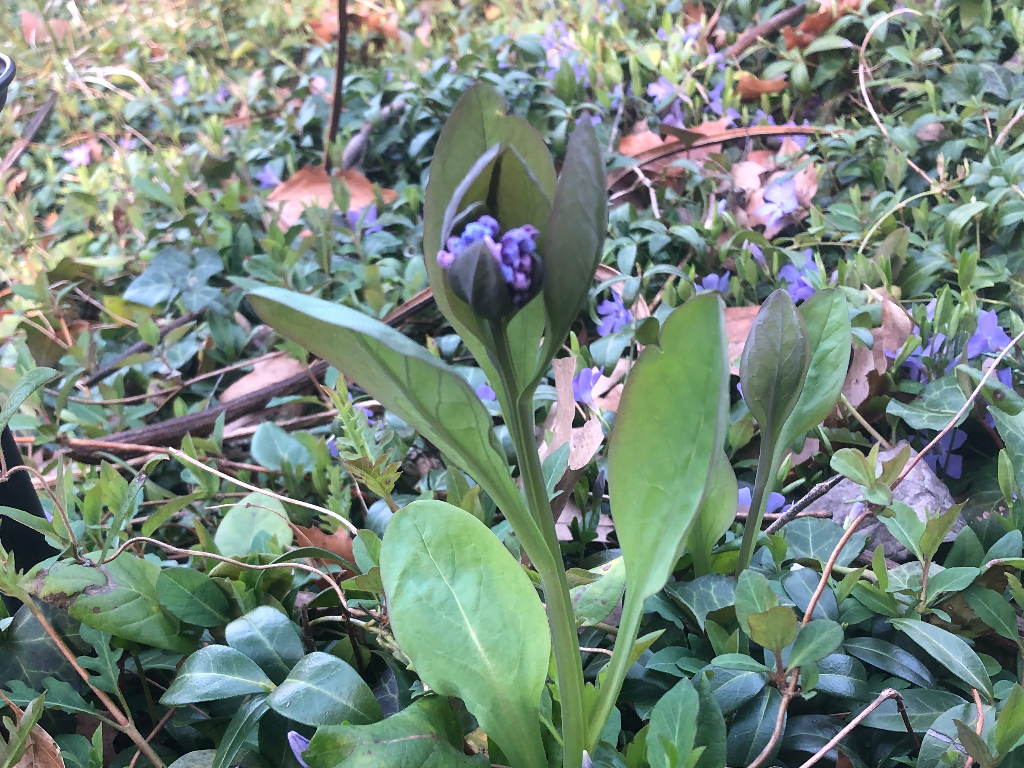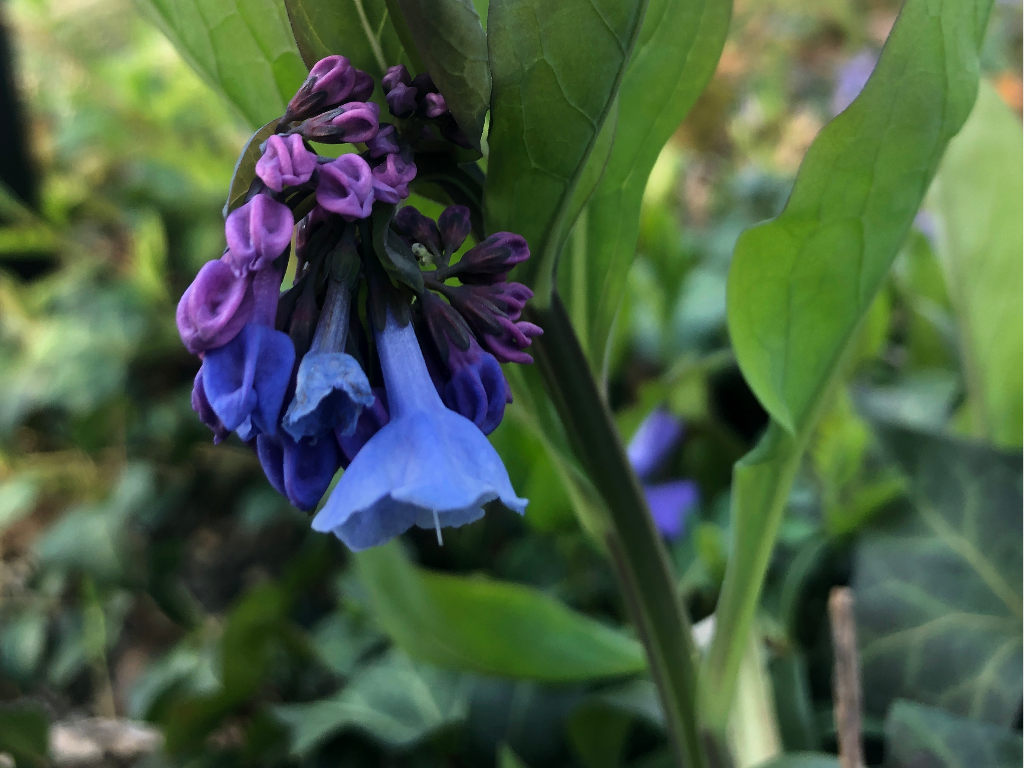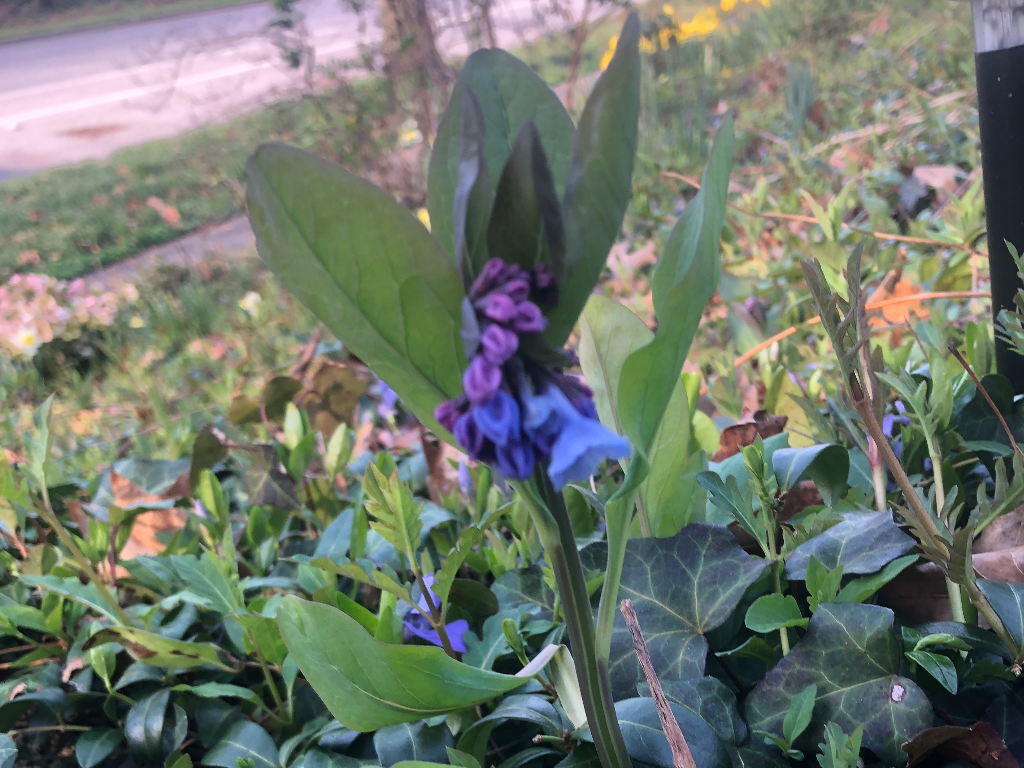Name and Classification
Common name: Virginia Bluebell
Botanical name: Mertensia virginica
Plant family: Boraginaceae
Plant Description
- Plant size: 2 to 3 feet
- Plant life cycle: Perennial
- Foliage color: Green
- Plant type: Herbaceous
- Bloom color: Violet-blue to lavender
- Bloom time: Late spring to early summer
- Seasonal interest: Spring, Summer, Winter
- Preferred sunlight: Part Sun to Full Sun
- Soil type: Moist to wet
- Watering needs: Regular watering

Common Problems
While relatively pest-resistant, Virginia Bluebell may face issues with powdery mildew. Adequate air circulation and proper spacing can help prevent this. Ensuring the soil remains consistently moist is key to a thriving plant. Avoid overhead watering so that plant leaves stay dry, or water in the morning so that the leaves will have time to dry off in the sun.
Care and Maintenance
Caring for Virginia Bluebell involves providing consistent moisture, especially during dry spells. However, this is usually not a problem since spring is a historically wet season. Mulching around the plant helps retain moisture and suppress weeds. Mulching along with consistent watering may help Virginia Bluebells persist throughout the entire growing season. Pruning is generally unnecessary until the plant wilts. At that time, the dead leaves can be cut back to the ground for a garden clean. Or, leave the dead plant parts to decompose naturally.

Garden Uses
Use Virginia Bluebells much like daffodils. They emerge early in the season and typically wilt away by mid summer. Randomized planting creates a naturalized, picturesque woodland landscape. Also try planting them around the perimeter of a garden for a colorful, early season garden border. They attract pollinators, making them a delightful addition to wildlife-friendly gardens. The cut flowers add a touch of elegance to floral arrangements.
Ecosystem Services
- Pollinator Habitat
- Shelter for Wildlife
- Riparian Buffer
- Erosion Prevention
Virginia Bluebell plays a crucial role in the ecosystem, providing an early season food source for pollinators such as bees and butterflies. Its dense foliage provides shelter for small animals, contributing to biodiversity. The plant’s preference for moist soils aids in preventing erosion and supports water purity in riparian areas.

Planting Suggestions
Create a harmonious woodland garden by pairing Virginia Bluebell with companions like Ferns, Wild Geranium (Geranium maculatum), and Trout Lily (Erythronium americanum).
Cultural Significance
Beyond its botanical charm, Virginia Bluebell has cultural significance as a symbol of awakening, renewal, gratitude and Spring. Its delicate blossoms are a reminder of the fleeting beauty of spring and it is referenced in literature and poetry. Mary Oliver and David Budbill are poets that specifically mention Virginia Bluebells in their work.
Sources/References
- Maryland Native Plant Society
- Lady Bird Johnson Wildflower Center
- University of Maryland Extension

